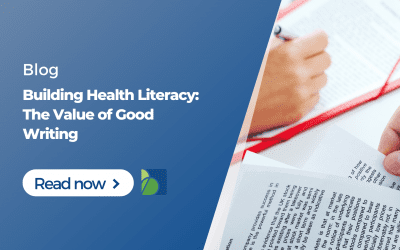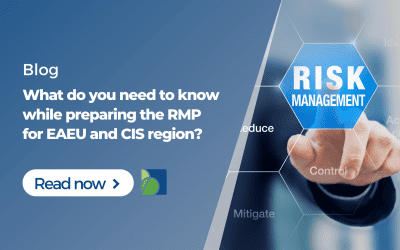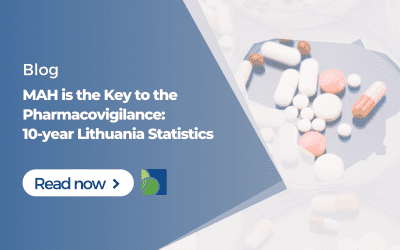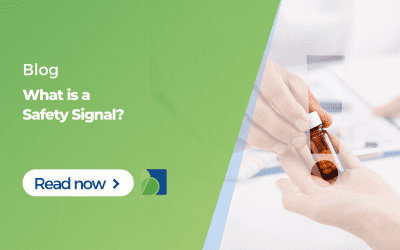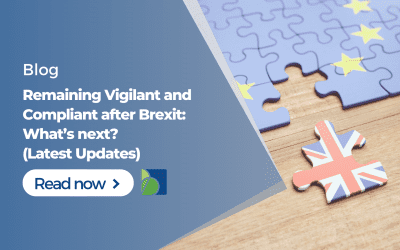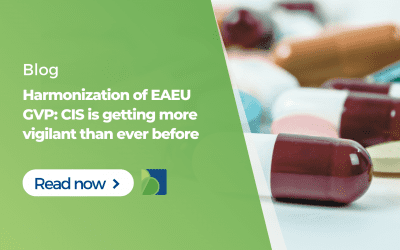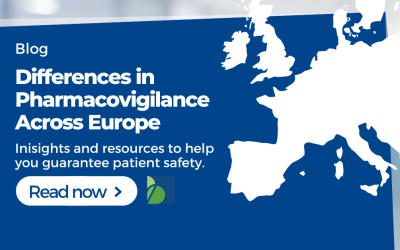
Developing a Safety Management Plan (SMP)
What is the Safety Management Plan (SMP)? This article explores all you need to know about the SMP for Pharmacovigilance and how you develop it. A Safety Management Plan (SMP) is a critical component of a comprehensive pharmacovigilance program. It outlines the procedures and processes for identifying, assessing, and managing potential safety risks associated with a drug or therapeutic product. The SMP is necessary for several reasons. It ensures patient safety by identifying and managing potential safety risks; it helps comply with regulatory requirements such as FDA and EMA, supports effective risk management, and facilitates continuous improvement. In addition, it helps communicate and collaborate among relevant stakeholders such as regulatory agencies, healthcare providers, and patient groups.
Steps to Develop a Safety Management Plan (SMP)
The first step in developing a safety management plan is to clearly understand the drug or therapeutic product, including its intended use, target population, and potential safety risks. You should gather this information from various sources, including preclinical and clinical trial data, post-marketing surveillance studies, and literature reviews.
Once a clear understanding of the drug or therapeutic product has been established, the next step is identifying and assessing potential safety risks. You can do this through various methods, such as literature reviews, adverse event reporting, and electronic health records data mining.
Once potential safety risks have been identified and assessed, the next step is to develop strategies for managing these risks. This may include changes to the labelling or packaging of the drug, educational campaigns for healthcare providers and patients, or even the withdrawal of the drug from the market.
Implementation and monitoring of the safety management plan is also an important step. This includes regularly reviewing and updating the plan and monitoring the effectiveness of the risk management strategies. It also includes monitoring and analyzing adverse event reports and other safety data to identify new or emerging safety risks.
An essential aspect of the safety management plan is communication and collaboration with relevant stakeholders, such as regulatory agencies, healthcare providers, and patient groups. This ensures that all stakeholders know the safety risks associated with a particular drug or therapeutic product and can take appropriate actions to mitigate these risks.
In conclusion, a safety management plan is a crucial component of a comprehensive pharmacovigilance program. It ensures identifying, assessing, and managing potential safety risks associated with a particular drug or therapeutic product. Regular monitoring, communication and collaboration with relevant stakeholders are essential for an effective safety management plan.
Essential aspects of the Safety Management Plan (SMP):
- Patient Safety: The primary goal of an SMP is to ensure the safe use of a particular drug or therapeutic product. By identifying and managing potential safety risks, the SMP helps to minimize the likelihood of adverse events and other drug-related problems, thereby protecting patients and the public.
- Compliance: Many regulatory agencies, such as the US Food and Drug Administration (FDA) and the European Medicines Agency (EMA), require manufacturers to have an SMP in place as part of their drug approval and post-marketing surveillance processes. Manufacturers can ensure compliance with these regulatory requirements by developing and implementing an SMP.
- Risk Management: A SMP is a vital tool for managing risk. By identifying and assessing potential safety risks, the SMP allows manufacturers to develop strategies for mitigating these risks. This helps to protect the manufacturer’s reputation and financial stability by minimizing the potential for product recalls, legal action and penalties.
- Continuous improvement: A SMP is a living document that should be regularly reviewed and updated. This continuous improvement process helps manufacturers to stay up to date with the latest safety information and best practices and to adapt to any new or emerging safety risks.
- Communication and collaboration: A SMP facilitates communication and collaboration among relevant stakeholders, such as regulatory agencies, healthcare providers, and patient groups. This helps ensure that all stakeholders are aware of the safety risks associated with a particular drug or therapeutic product and can take appropriate actions to mitigate these risks.
In summary, an SMP is critical for ensuring patient safety, compliance with regulatory requirements, effective risk management, continuous improvement, and effective communication and collaboration among relevant stakeholders.
Reviewing the Safety Management Plan
For multiple reasons, it can be beneficial to have a specialist review your Safety Management Plan (SMP).
A pharmacovigilance or drug safety specialist will deeply understand the principles and best practices of SMP development and implementation. As a result, they will be able to provide valuable insight into potential safety risks and effective strategies for managing them. Additionally, they should be able to provide an unbiased, objective review of your SMP, which can help to identify any areas that may require improvement or further attention.
A specialist can review your SMP to ensure that it complies with the requirements of regulatory agencies such as the US Food and Drug Administration (FDA) and the European Medicines Agency (EMA).
An external review by a specialist can provide access to the latest safety information and best practices, which can help ensure that your SMP is up-to-date and effective.
In summary, you can use a specialist to audit your SMP to ensure it is implemented correctly and effectively and to identify areas for improvement.
Guidelines to create Safety Management Plan for Pharmacovigilance
Here are some helpful guidelines and websites to get started with developing a Safety Management Plan (SMP):
- The International Conference on Harmonisation (ICH) Guidelines for Good Pharmacovigilance Practices (GVP) provide a framework for developing and implementing SMPs. You can find them here.
- The Center for Drug Evaluation and Research (CDER) of the US Food and Drug Administration (FDA) provides guidance on pharmacovigilance and risk management for biopharmaceutical companies. You can find them here.
- The European Medicines Agency (EMA) provides guidance on pharmacovigilance for human medicinal products, including SMPs. You can find them here.
- The International Society of Pharmacovigilance (ISoP) is a professional society that provides education, training, and resources on pharmacovigilance and SMPs. You can find them here.
These websites provide valuable guidance on the principles and best practices of pharmacovigilance and SMP development and implementation, including regulatory requirements and compliance. However, remember that these guidelines are not a substitute for professional judgment and advice, and you should consult with an expert in the field if you have any specific questions or concerns about your SMP.
Building Health Literacy: The Value of Good Writing
Scientists, doctors, and health authorities often use written communication to present their research, opinions, or guidelines to the patients. While the questions they approach may be complex, the language should not. In medical documents, misinterpreted information may endanger the health and life of a patient. Thus, the main goal in medical writing is to convey the message clearly and concisely to avoid misinterpretation.
Proper Publicizing in CEECs – Path to Successful Social Media Commercials
With the growth of social media network users all over the world, there is no doubt that one of the most widely used channels for promoting is social media. Statistics show that Facebook and Instagram were used actively with more than 3.4 billion people daily by January 2020. Therefore, since medical devices and over-the-counter medicines are being more often promoted by commercials on social media nowadays, there is a greater risk of hidden or misleading advertisements.
What do you need to know while preparing RMP for EAEU and CIS region?
Preparation of Risk Management Plan (RMP) for a specific medicinal product usually is the responsibility of the Qualified Person Responsible for Pharmacovigilance (QPPV) and its team. Thus, QPPVs and their team’s should be familiar with legislation requirements for RMP preparation in different regions. Within this article, we will concentrate on the Eurasian Economic Union (EAEU) and identify specific conditions of EAEU countries as well as to try to understand the expectations of Competent Authorities in this region.
MAH is the Key to the Pharmacovigilance: 10-year Lithuania Statistics
Even though the drug safety and reporting of the adverse effects is the responsibility of all Health Care Providers, pharmacists and patients, statistics show that the one in charge is Marketing Authorization Holder. During the National semi-annual conference „Pharmaceutical News“, State Medicines Control Agency presented the statistics of suspected ADRs reporting in Lithuania.
Biomapas appoints Head of Global Pharmacovigilance
March 2020 – Clinical, regulatory and pharmacovigilance solution provider to the global life science industry, Biomapas, appointed leading pharmacovigilance professional Martijn van de Leur as Head of Global Pharmacovigilance. With offices located in Lithuania, Switzerland, Sweden, Russia, Georgia, Ukraine and Poland, Biomapas provides services in 60+ countries across 4 continents. As a functional and full outsourcing solution provider, Biomapas continues to strengthen its international team and geographical coverage of its services globally.
What is a Safety Signal?
Occasionally we see the information of a safety signal for medical product, but what does it really mean? We can describe the safety signal as an indication for new and significant safety-related data for a marketed product. The new data could indicate a new potentially causal association between an adverse event, beneficial response and a medical product, or a new aspect of causal association that was previously known. Usually, a signal will be relevant for all products with the same active ingredient, including the combination products. Further, let’s look more at the main steps of the safety signal management.
Local Literature Surveillance Challenges and Specifics in the EU, CIS and LATAM regions
PV legislation introduced by the European Commission in 2012 and GVP guidelines together with local requirements committed each MAH to perform literature review in countries where their products are present. Compliance with mandatory requirements and guidelines is not always a simple task when local requirements and specifics come along. In this article, we will take a closer look at these challenges and specifics for local literature surveillance in different regions as EU, CIS and LATAM.
Remaining Vigilant and Compliant after Brexit: What’s next? (Latest Updates)
On 29th March 2017 UK submitted the notification of its intention to withdraw from the EU. This means that UK will become a ‘third country’ from 30th March’19. Even though leaving the EU with a deal remains the Government’s top priority, UK drug agency is publishing a series of guidance documents for industry and other stakeholders covering the proposed arrangements for the regulation of medicines, medical devices and clinical trials, if UK leaves EU with no deal.
Harmonization of EAEU GVP: CIS is getting more vigilant than ever before
On the 6-7 March, Biomapas Pharmacovigilance Department management and team from the CIS region participated in a meeting in Minsk. It was dedicated to strengthening collaboration between the team members as well as updating knowledge on latest PV trends. We discussed the most recent releases of legislation, such as Eurasian Economic Union Good Pharmacovigilance Practice harmonization and the importance of a teamwork approach with Biomapas’ PV Project Manager CIS, Aliaksandr Bakshtanovich, MD.

